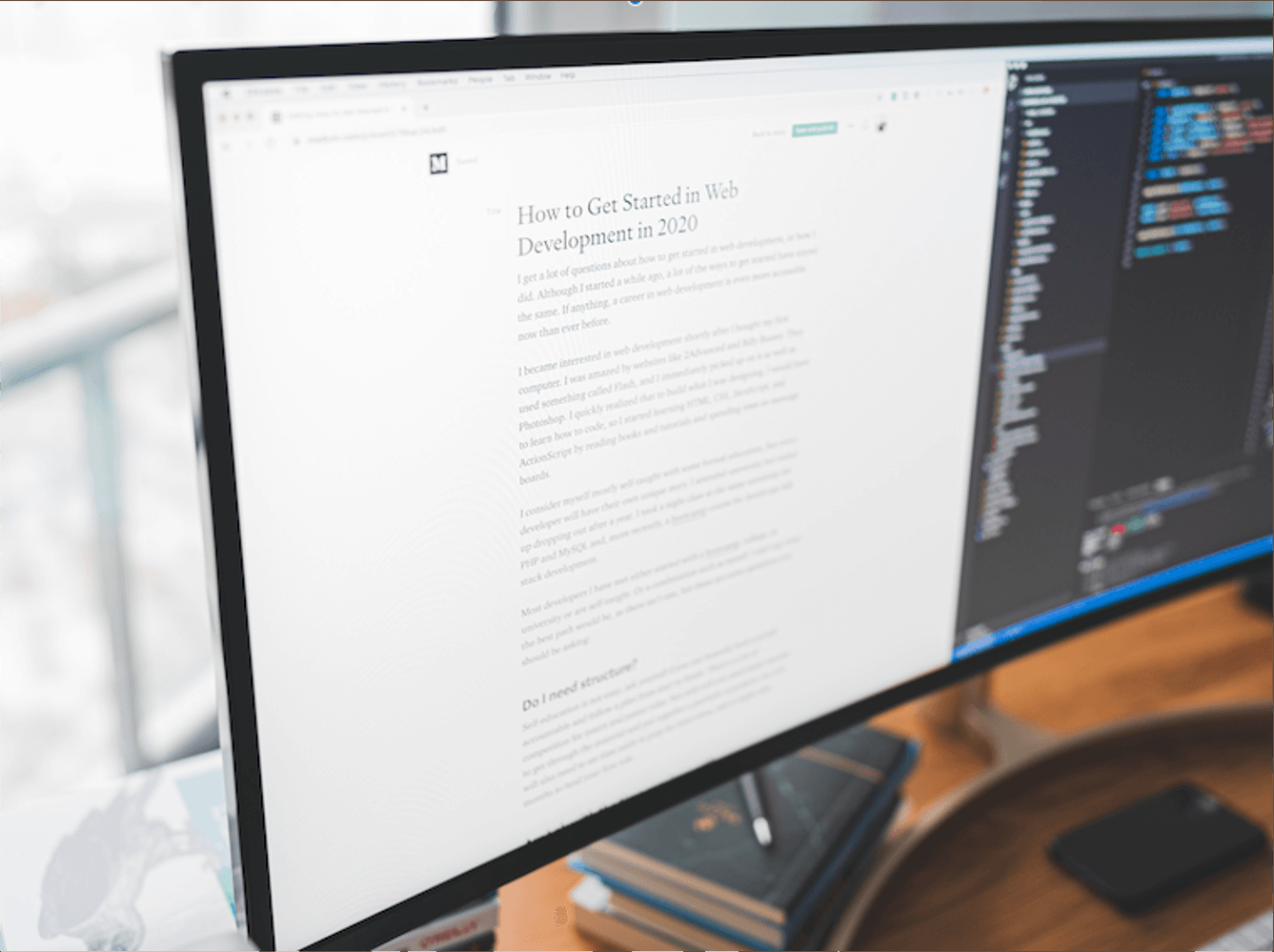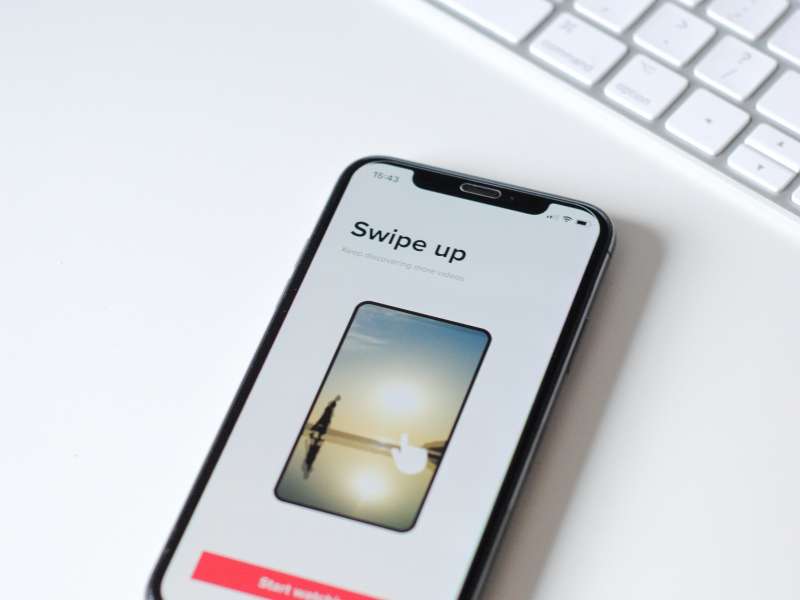In the course of the increasing digitalization of many business processes, companies are increasingly faced with the decision which platform offers the optimal solution for their requirements: Website, Responsive Website, web application or a mobile application? In addition to the type of digital project, the target group and the possible budget should always be taken into account when making the decision. Every project has its own challenges. Therefore it is even more important to talk from expert to expert and to search together for the optimal solution.

Photo by Karl Pawlowicz on Unsplash
The website for customer acquisition
A conventional website is ostensibly highly informative, usually aims to generate leads and offers simple functionalities such as forms or chat windows. In some cases the website may also contain a rudimentary shop integration.
Recommended by us for simple or private pages
- Wix, Squarespace: DIY / Modular system
- Wordpress: Focus on blogging
- Webflow: for users with an affinity for design
Our recommendation for professional sites
- Individual design for the desired target group
- Implementation of the design with TailwindCSS
- CraftCMS as content management system
- The webshop as a business model
A webshop is a little more complex and is built as a dedicated eCommerce platform. A good webshop system should be able to handle functions such as voucher creation, customer promotions, customer-specific shop presentation or recommendations/cross-selling/up-selling functionalities. In addition, a simple administration option for a large number of products and product variants should be possible. A further indispensable feature is the connection or integration of merchandise management systems. If one should aim at an international audience, not only multilingualism but also different sales tax regulations and shipping costs are important issues, which are only solved well by a few shop systems.
Platforms recommended by us
- Shopify: ideal for small shops
- Shopware
- Prestashop
The web application for individual solutions
In contrast to simple websites and eCommerce shops, web applications serve a variety of individual functionalities. These have now largely replaced individually developed software that was installed locally and run in any modern browser. Good examples of web applications with extensive features are Facebook, LinkedIn or Salesforce.
An individual development is always a good idea if the desired functions cannot be covered by standard products such as a CRM (Content Management System) or other products and plugins. In principle, anything is possible with greenfield development. However, this is also associated with a higher expense risk, which is minimized by an experienced team and a stringent procedure.
A modern web application is divided into a front-end application that runs in the user's browser and a back-end application that runs on a server. The communication between the two applications takes place via an interface (API).
The possibility of executing entire applications and thus also the business logic directly in the browser is relatively new and is made possible by the fact that all modern browsers can execute Javascript programs in addition to the pure display of HTML. From normal web pages or somewhat dusty web applications one still knows that a button click reloads the entire page to react to it. To prevent this from happening, first solutions were developed that specifically caused Javascript changes to the page in some places, e.g. via jQuery. However, this approach quickly became complex and no longer controllable. Therefore, over time, various front-end frameworks have emerged, which, with similar approaches, enable a tidy development, mostly based on components.
The most popular frameworks currently
- React: Initiated and developed by Facebook, open source, efficient and stable solution with a counterpart for mobile development with React Native
- Angular: Initiated and developed by Google, Open Source, initially used by us, but had several version changes, which were not backward compatible.
- vue.js: Open source framework with smart solutions, which were partially adopted by React, in the current version not yet ready for productive use in our opinion.
Meanwhile, a large part of the business logic is more in the frontend and the backend is primarily used for data management. In between there is an interface (API) provided by the backend. The API basically consists of defined "routes", e.g. www.einedomain.de/einprodukt/eineinformation, which are called by the frontend and can trigger functionalities or synchronize data in the backend. Probably the best known variant is the so-called REST API. We at zauberware prefer the more modern GraphQL API, which allows the frontend to request the API more individually and also saves enormous development effort and thus costs.
As already mentioned, when using a frontend framework, the backend is mainly used to manage data and user settings. The graphical user interface for data administration is usually different from that of the frontend. For the web applications there are also frameworks that simplify your work. Here is an overview of our most used frameworks:
- nodeJS, Javascript: Very efficient, we use them especially with expected high access rates.
- RubyOnRails: Can also be used without frontend, but then you get a webapp with one reload per button click. We like to use it as backend for React Apps.
More examples
- Django: similar to Rails, only in the language Python
- Laravel: similar to Rails, but in the PHP language
- HeadlessCMS: For simple solutions the data can be managed in a so-called HeadlessCMS, i.e. a decoupled CMS. This requires a rather low development effort once the system has been set up. We like to use GraphCMS or CraftCMS for this.
Mobile available, always with you

Photo by Karl Pawlowicz on Unsplash
When accessing via mobile devices, a distinction is made between responsive websites and mobile applications. In most use cases, it is sufficient to make a website or web application responsive and you can do without a separate mobile application. The individual components are developed in such a way that, depending on the width of the browser window used, they are either reduced in size, rearranged or completely replaced. If you need certain features such as offline functionality, push messages, a user login via FaceID, or if you only want to use the application on the move, then the implementation of a mobile application is a good idea.
These are in turn differentiated into:
Native Apps
Development in the provided languages and development environments of Apple for iOS and Google for Android.
Crossplatform
The development is done in a programming language and provided platform. The developed code is compiled natively, i.e. translated into the same zeros and ones as the native apps. This has the advantage that you only have to develop once, but the result looks the same. The disadvantage is that certain, relatively new features of iOS or Android can only be used with a delay.
- React Native: established by Facebook, based on Javascript, counterpart to React in the web area. In our opinion currently the best solution.
- Xamarin: Bought by Microsoft and further developed in the programming language C#. We have used this solution for several years and have developed existing applications. In contrast to React Native, Microsoft is always a little behind the new versions.
- Flutter: Relatively newly established by Google, in the programming language Dart.
Game Engines
Depending on the requirements it can also make sense to use a game development platform. It doesn't necessarily have to be a game, even the use of augmented or virtual reality can often be better implemented with a game engine such as Unity, our favorite for this purpose.
Hybrid Apps / Cordova
For the sake of completeness, the beginnings of cross-platform development are still on the market. The mobile application is developed as a mobile website and runs on a small web server directly on the mobile device. The user experience is not very good, especially with complex views, every interaction has a slight delay in reaction.
Do you have any further questions? We have the answers. We are experts in the individual development and implementation of various digital web projects. Please feel free to send us a message to hello@zauberware.com or call: +49 8051 988 69 46.
